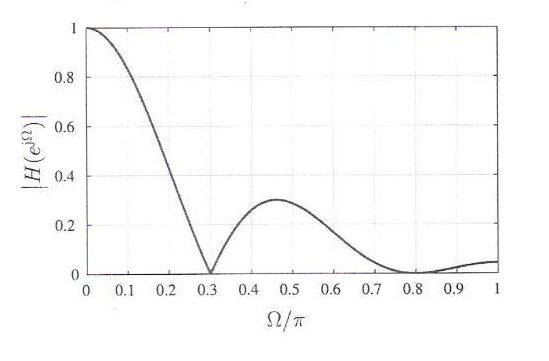Could someone please help me with the following question?
Below is the magnitude response of a real-valued causal linear phase FIR system of order N = 6. Determine the location of poles and zeros.
I know that for FIR systems all the poles are located at the origin, so we have a pole of order six at the origin. Also from the given diagram, I can say that we have a zero at 0.3pi and one at 0.8pi (both on the unit circle). Now since the system is real-valued, location of poles and zeros should be symmetric w.r.t. the real axis. But I don't know about the two other zeros?
Also, what about the pick in the diagram? Does it mean we have another pole?

